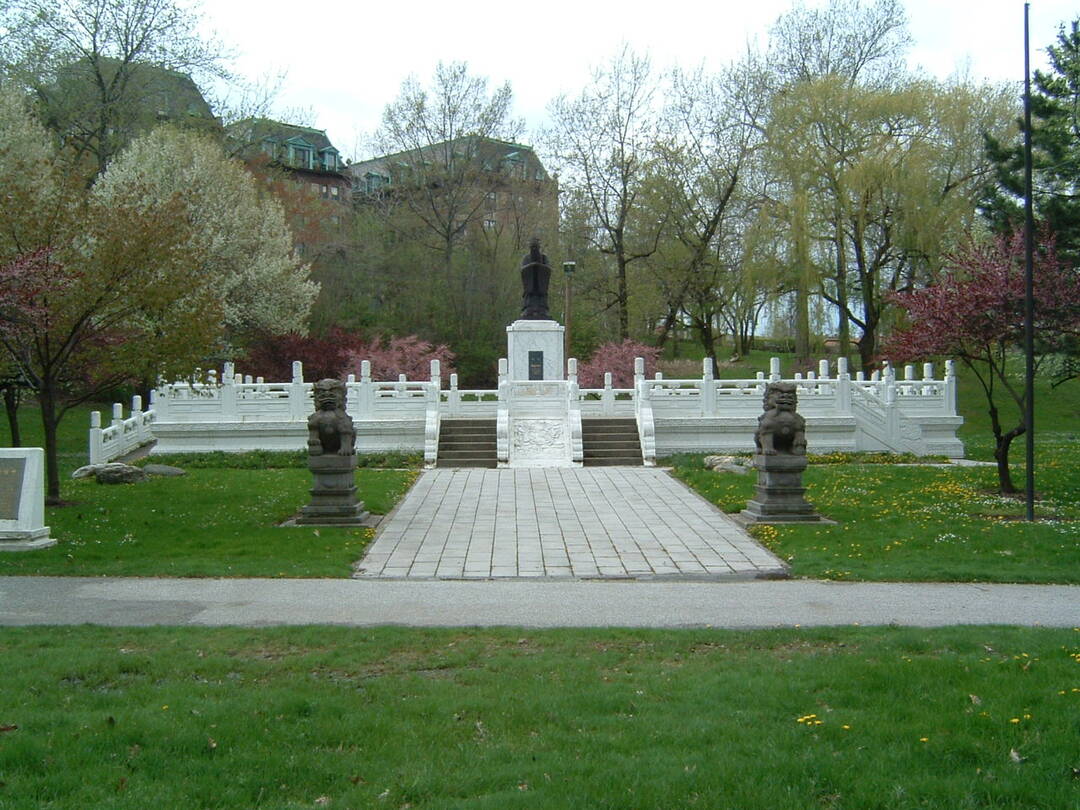Chinese Cultural Garden

Cleveland's Chinese population began to slowly grow after the 1860s. In 1880, the U.S. census counted a total of 23 Chinese and Japanese immigrants living in the city. The 1890 census recorded 38 Chinese with the number exceeding 100 by 1900. The Chinese settlers were Cantonese from the province of Guandong (Kwangtung) who came to Cleveland after having lived on the west coast of the United States.
The first Chinese settlement was on what is now W. 3rd Street. It then moved to Ontario St. between Public Square and St. Clair Ave. In the late 1920s, as major buildings were starting to occupy Public Square, some of the Chinese immigrants moved to E. 55th St. between Cedar and Euclid Ave. In the 1930s, with the population at about 800, the Chinese community settled around Rockwell Ave. and E. 21st St. Since 1930 the block on the south side of Rockwell Ave. between E. 21st St. and E. 24th St. has been Cleveland's Chinatown with about 2-2,500 Chinese living there in 1980. The 1990 U.S. Census estimated that 985 Chinese, Taiwanese and Hong Kong immigrants resided in Cleveland.
The Chinese community has always maintained their Chinese values and traditions. The movement to preserve their cultural values grew particularly strong during the 1960s. Since then, language and history classes have been taught in academies and public libraries, cultural programs have been created for Cleveland's public television station, and traditional Chinese music has been presented in concerts with musicians from Beijing, Shanghai, and Hong Kong. With these activities Clevelanders have had the opportunity to gain a wider understanding of China and Chinese culture.
Established in 1985, the Chinese Cultural Garden was a gift of the city of Tapei and its business community and was modeled after the Chinese Imperial Palace. The plaque acknowledging the gift says: "On behalf of the people of Taipei We present this Chinese Cultural Garden to the people of Cleveland as a confirmation of friends and cultural exchange between our sister cities."
The Chinese Cultural Garden embodies the complexities of Chinese history in the twentieth century. After civil war ended in 1949, China was split between the People's Republic of China (which control's mainland China) and the Republic of China (which controls Taiwan and several surrounding islands.) Off the main chain of gardens, the Chinese Garden is notable for the contrast of its stark white marble against a lush green background. Two Chinese dragons guard the entrance with a statue of Confucius (a teacher, philosopher and political theorist, 551-479 BC) atop a white pedestal.
Audio
Images



